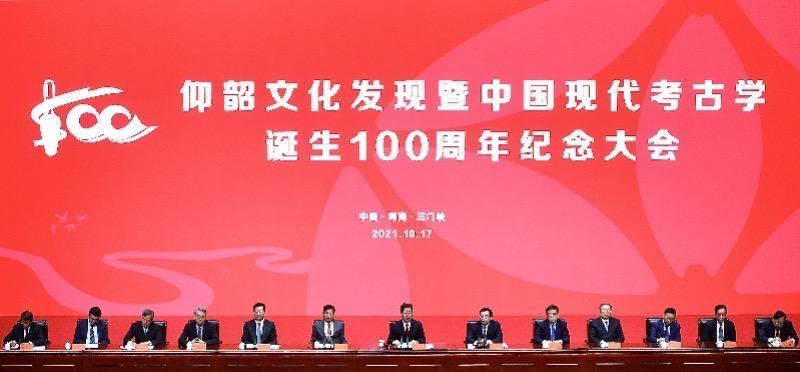In 1921, the Swedish geologist Anderson was invited by the then Chinese government to work with the Chinese geologist Yuan Fuli to search for mineral deposits and collect paleontological fossils in North China. They have successively discovered the ruins of Zhoukoudian in Beijing and Yangshao Village in Shichi, Henan, and excavated the Yangshao ruins. This excavation is of great significance in the history of Chinese archaeology, it marks the beginning of Chinese Neolithic archaeology, and also marks the birth of modern Chinese archaeology.
2021 marks the 100th anniversary of the discovery of Yangshao culture and the birth of modern Chinese archaeology. On October 17th, the "Yangshao Cultural Discovery and the Centenary Commemoration Conference of the Birth of Modern Chinese Archaeology" was held in Sanmenxia City, Henan Province.

Yangshao Cultural Discovery and the Centenary Commemoration conference of modern Chinese archaeology
The next day, the "Third Chinese Archaeological Conference" was held in Sanmenxia City, Henan Province, and the opening ceremony announced the "Top 100 Archaeological Discoveries in a Hundred Years", 100 discoveries such as the Zhoukoudian Site in Beijing and the Nihewan Ruins Group in Yangyuan, Hebei Province, and the ruins of the Nanyue State Palace in Guangzhou and the Tomb of the King of Nanyue in Guangdong, as well as the shipwreck of the "Nanhai I".
Yin Xu, Erlitou, Liangzhu, Zhoukoudian, Mawangdui, Sanxingdui... Over the past hundred years, modern Chinese archaeology has made remarkable achievements. Archaeological discoveries have rewritten people's traditional understanding of Chinese history and culture, depicting the imprint of our ancestors' actions on the vast land, and answering "who we are, where we come from, and where we are going" with physical evidence.
On October 15, 2021, the staff worked at the site of the fourth archaeological excavation at the Yangshao Village site. Xinhua
Since entering the new century, the archaeological cause has flourished, with the continuous growth of archaeological institutions and professional teams, new important archaeological achievements emerge in an endless stream, step by step to unveil the mystery of Chinese civilization, whether it is the confirmation of the Han Emperor's mausoleum, or the exposure of the Taiping Princess "mansion" in the square site, each new discovery has brought many reflections and surprises.
Archaeology was originally a cold and remote science, but in recent years, it has "flown into the homes of ordinary people" through the wings of science and technology. In 2021, the live broadcast of the excavation of the sacrifice pit at the Sanxingdui site allowed the public to "visit the archaeological site" with a total of 7.1 billion hits on Weibo. At the same time, the ice cream based on bronze masks launched by the Sanxingdui Museum and the "Archaeological Blind Box" created by the Henan Museum are also out of the circle. Variety shows such as "National Treasure" and "Chinese Archaeological Conference" use vivid and fragrant ways to unlock archaeological codes and explore Chinese civilization, which will become a hit after the broadcast. Popular science books with archaeology as the theme are also widely popular among readers, and scholars such as Li Zero, Qi Dongfang, Xu Hong, Yang Hong, and Zheng Yan have become industry stars sought after by the public. With the high-frequency attention of the public and the help of science and technology, the cultural IP that will sweep the world will be born in the field of archaeology in the future. (Huang Qian)